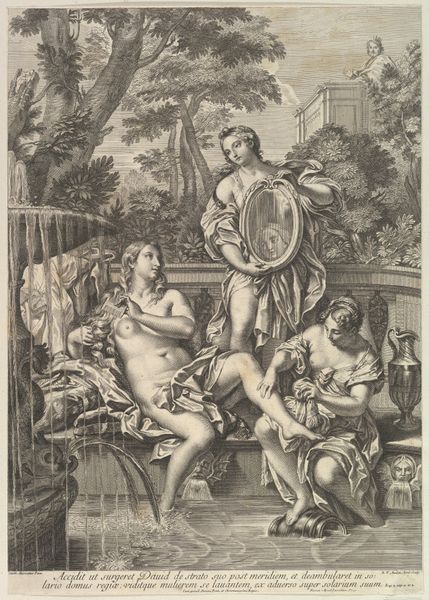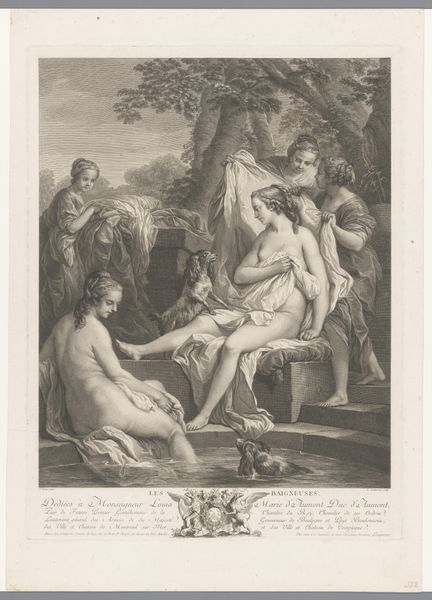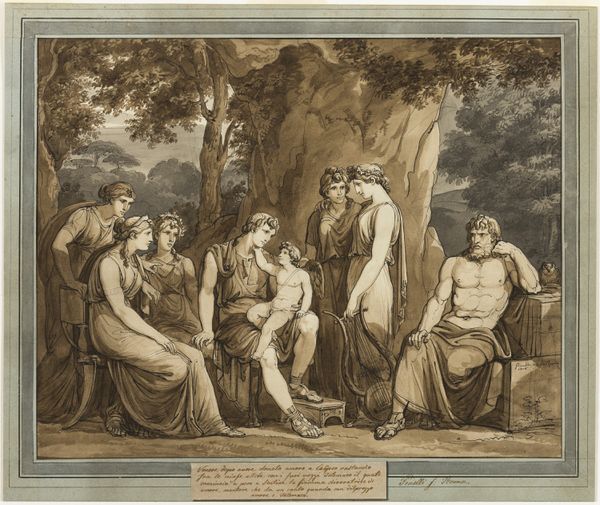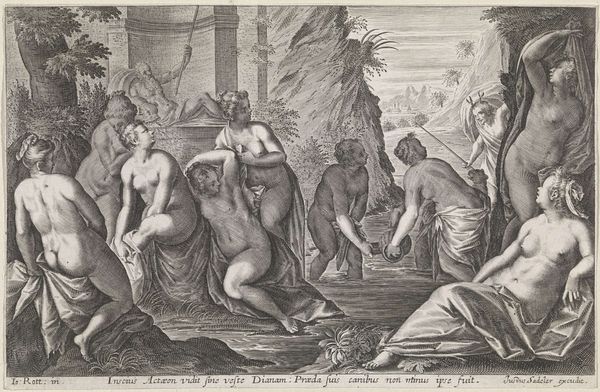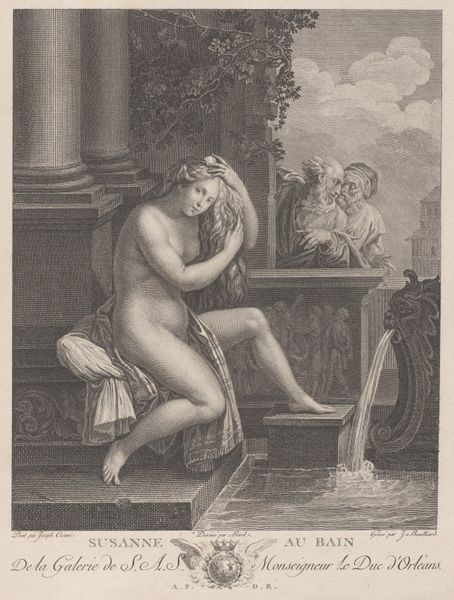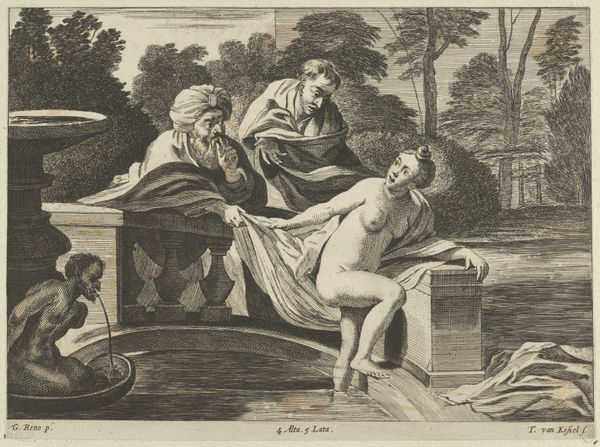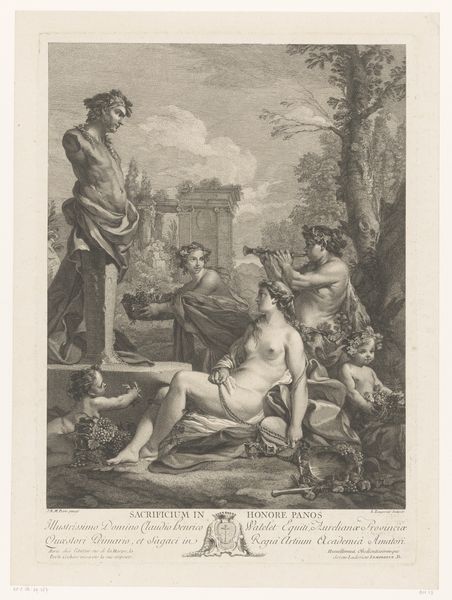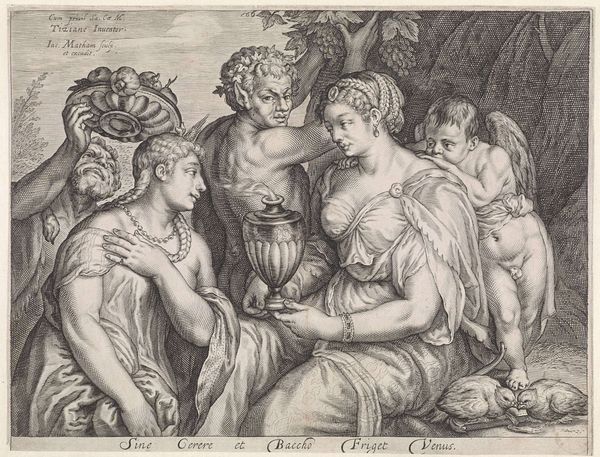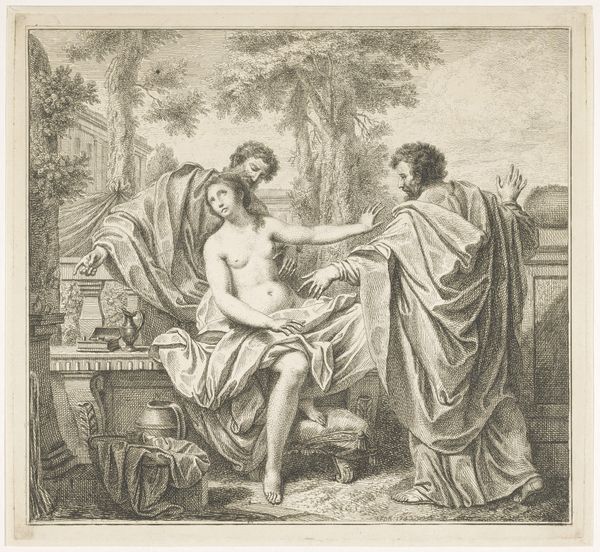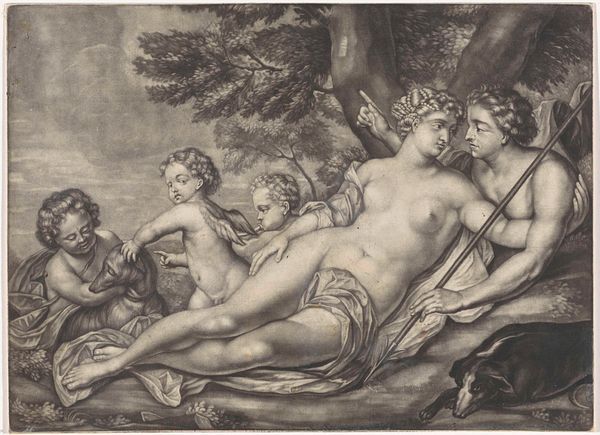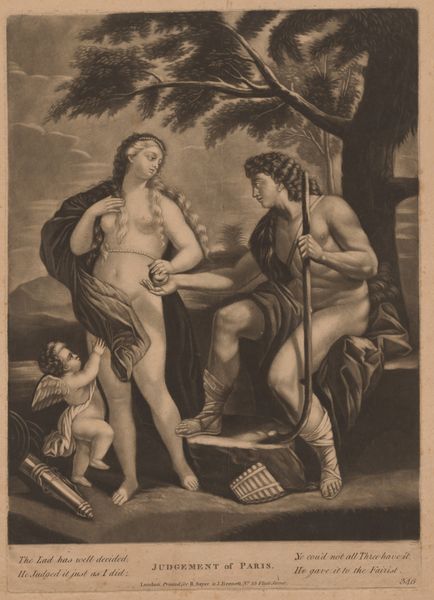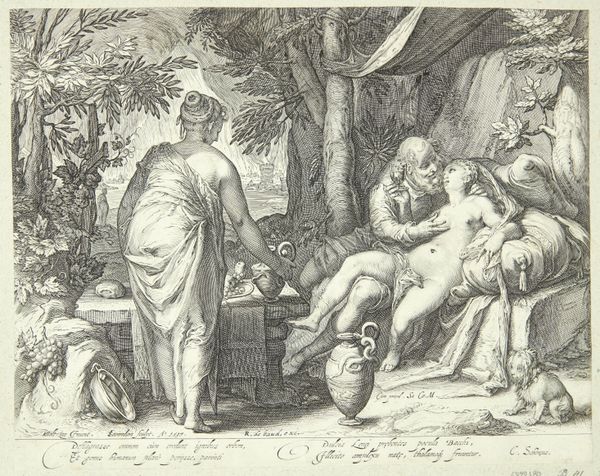
print, engraving
narrative-art
baroque
classical-realism
history-painting
nude
engraving
Dimensions: height 305 mm, width 374 mm
Copyright: Rijks Museum: Open Domain
Curator: Look at this, an engraving from between 1662 and 1726, now at the Rijksmuseum. Gerard Valck is credited with its creation, and it depicts the scene of “Batseba ontvangt de boodschap van David," or Bathsheba receiving David's message. Editor: Immediately, the composition strikes me. The foreground bathed in light focuses our gaze entirely on Bathsheba, while the architectural background seems both present and distant, like a fading memory. There's a clear emphasis on her physical form created by the distribution of highlights and shadows. Curator: It is indeed a powerful depiction. The symbolism of Bathsheba at her bath has, over time, become intrinsically linked with themes of temptation and fate. This image pulls from cultural memory, echoing stories about power dynamics and moral challenges. The gaze is really a key symbolic element here: hers as she looks downward and outwards towards her destiny, and King David's presumably at her from afar. Editor: Yes, the play of light across the textures contributes to that narrative tension. Notice the meticulous rendering of fabric, skin, and even the subtle reflections in what appears to be a nearby vessel. There’s an undeniable mastery in the way the artist evokes depth and dimensionality within the constraints of an engraved print. The linear quality emphasizes every curve and fold. Curator: The presence of servants caring for Bathsheba adds a layer to the cultural understanding of beauty and status. And the architecture acts almost as a silent witness, its classic form giving weight to the unfolding drama, echoing themes found in Baroque and Classical Realist artistic movements. Editor: I agree. And perhaps its monumentality can symbolize the King's authority looming even within this private scene. I can see now how that tension between public power and personal vulnerability creates an artwork that goes far beyond the simply illustrative. Curator: Exactly, and thinking about how these enduring narratives are reinterpreted across generations allows for art to continuously speak. Editor: Absolutely. By analyzing the composition and execution we're led toward broader philosophical understanding.
Comments
No comments
Be the first to comment and join the conversation on the ultimate creative platform.


